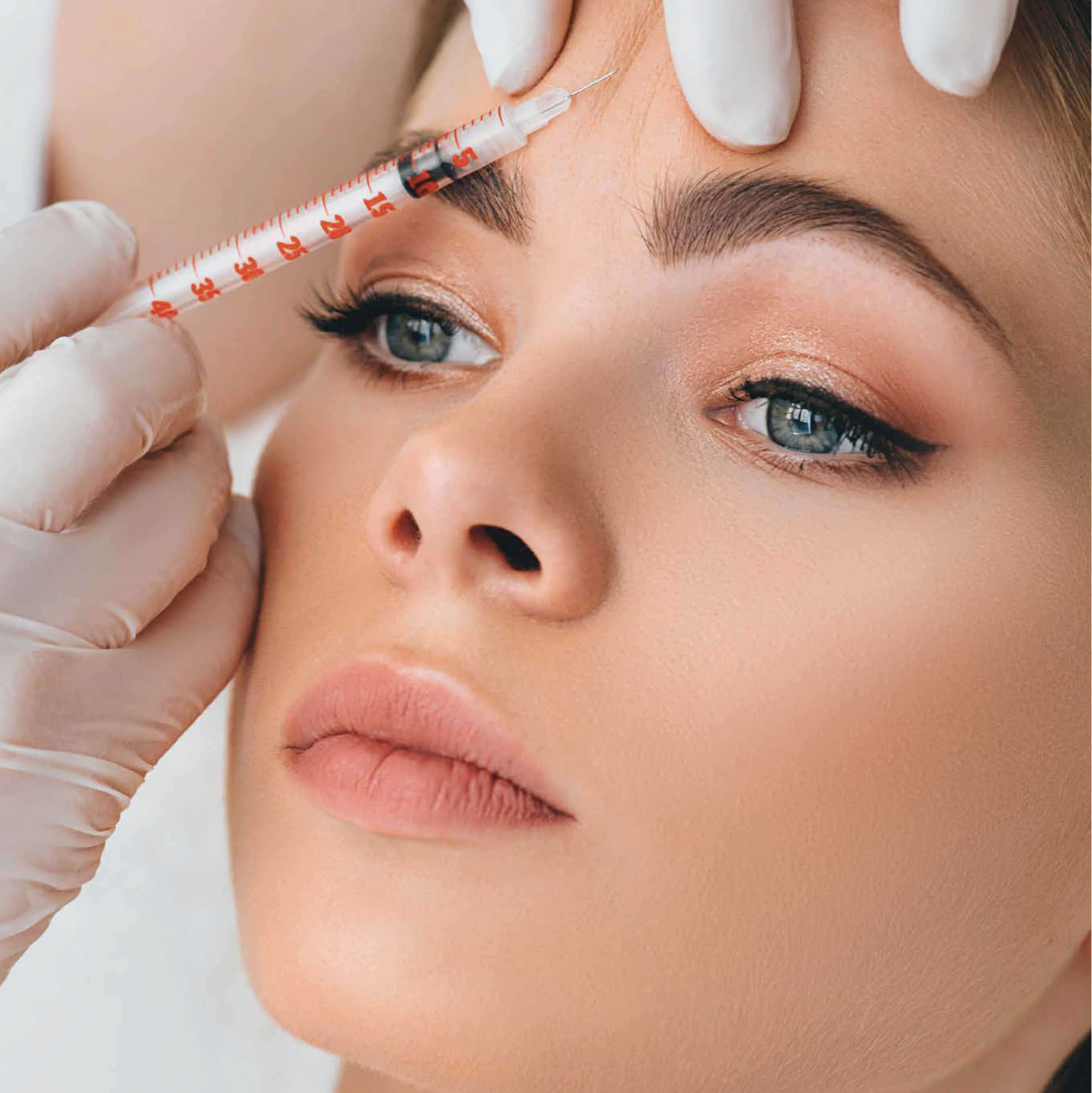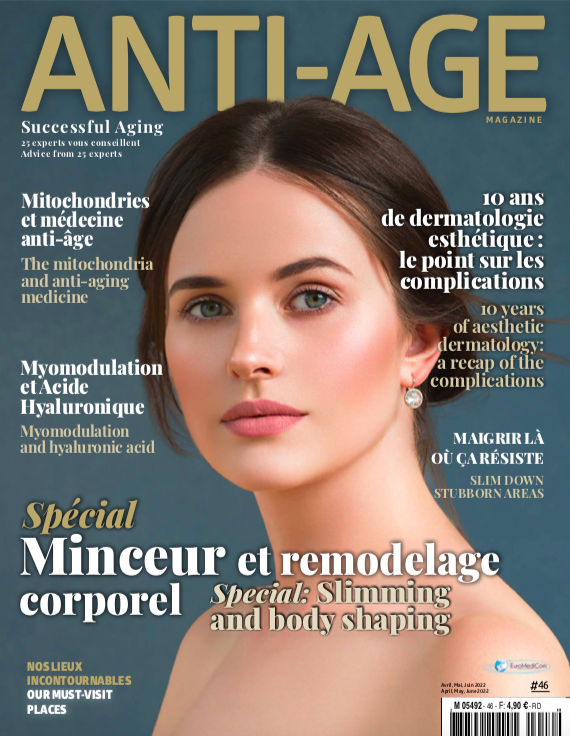By the doctor Veronique Gassia
Botulinum toxin, Millennials and feminising the expression
The action of type A botulinum toxin is not limited to treating wrinkles in the upper third of the face. Clinical observations over the last 20 years combined with dynamic and functional anatomical knowledge have highlighted its unique ability to open up the expression. By modifying the muscle balances, this toxin can alter the position of the eyebrow and correct any asymmetry. This is a very common request, especially from Millennials, who also want to treat any early wrinkles or achieve a “cat or fox eye” look. Requests concerning other parts of the face are also on the rise, such as treating bunny lines, a gummy smile, or hypertrophy of the masseter muscles to make the face more oval-shaped.

Erasing negative facial expressions while maintaining its natural expressiveness
Botulinum toxin injections can erase the involuntary negative facial expressions connected with aging, such as a stern expression by correcting glabellar lines, or a sad expression by lifting the eyebrows, and all while preserving the face’s natural expressiveness. By injecting into the corrugator muscle, which is responsible for glabellar lines, we can erase an involuntary angry or anxious expression, and therefore their proprioceptive feedback. Similarly, this correction leads to improved social interactions by way of positive cerebral synchronisation (mirror neurones). We therefore see that the impact of toxin goes beyond simple beautification or rejuvenation.
Mesobotox technique
Mesobotox or microbotulinum involves injecting diluted botulinum toxin intradermally. A number of publications have been written about this technique, showing an improvement to the skin quality: fine lines, texture, pore size, seborrhea, elasticity. It relaxes the superficial microfibrils in the facial muscles, which are attached to the deep layers of the cutaneous envelope and are responsible for the fine lines that appear due to aging, as well as acting upon the sebaceous and sudoriparous glands. However, its efficacy is limited to a maximum of 3 months.
Nowadays, preventing facial aging with muscular toxin is well documented. It acts by relaxing the muscles responsible for expression lines, modifying the tonus of the muscles that drag the face down, and by having a direct action on collagen synthesis, namely by inhibiting metalloproteinase.
What is more, new formulations of type A botulinum toxin are already on the market or in development, in the USA or Asia. Some of them offer very promising durations (24 weeks for daxibotulinumtoxinA) or faster and shorter actions (botuli- numtoxinE) and, in the future, synthetic toxins may be more specific or longer-lasting.
This way, botulinum toxin injections in aesthetics go way beyond simply correcting expression lines, but they require real expertise in order to offer optimum results, to be administered in exactly the right place, in the right dosage and concentration. This technique is an essential part of rejuvenating, beautifying and preventing aging in the face.
Références :
Choudhury S, Baker MR, Chatterjee S, Kumar H. Botulinum Toxin: An Update on Pharmacology and Newer Products in Development. Toxins (Basel). 2021 Jan 14;13(1):58. doi: 10.3390/toxins13010058. PMID: 33466571; PMCID: PMC7828686.
Diaspro A, Calvisi L, Manzoni V, Sito G. Microbotulinum: A Quantitative Evaluation of Aesthetic Skin Improvement in 62 Patients. Plast Reconstr Surg. 2020 Nov;146(5):987-994.
doi: 10.1097/PRS.0000000000007248. PMID: 33136941.
 By the doctor Veronique Gassia
By the doctor Veronique Gassia
Former house doctor and dermatology consultant, founding member of the GDEC (aSFD aesthetic and corrective dermatology group).
Co-author of “L’art des injections en esthétique” (Arnette 2021). Injection expert and trainer.
More information on drgassia.fr















